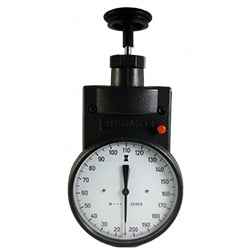Exactly How a Tachometer Assists Monitor Engine Health and Performance
Exactly How a Tachometer Assists Monitor Engine Health and Performance
Blog Article
Opening the Secrets of Tachometers: Every Little Thing You Required to Know Regarding This Essential Instrument in Your Car
Recognizing the details of tachometers can provide beneficial understandings into your automobile's performance and maintenance demands. From gauging engine rate to figuring out the information it provides, tachometers serve as an essential device for automobile owners and enthusiasts alike. By untangling the secrets behind this important tool, you can unlock a wide range of info that can enhance your driving experience and make certain the durability of your vehicle.
Relevance of Tachometers
The relevance of tachometers lies in their capacity to offer crucial real-time information about an engine's rotational speed, enabling exact monitoring and upkeep of machinery. By determining the revolutions per min (RPM) of an engine's crankshaft, tachometers offer useful insights into the engine's efficiency - tachometer. This data is essential for ensuring that the engine operates within its optimum variety, staying clear of prospective damages from over-revving or underperforming
Tachometers play a vital function in aiding operators and professionals spot any type of anomalies in the engine's speed, which can indicate issues such as gas inadequacy, mechanical problems, or extreme pressure on the engine. By promptly determining these concerns through tachometer analyses, maintenance can be done proactively, protecting against costly repair work and downtime in the future.
Moreover, tachometers are particularly vital in high-performance lorries and machinery, where precise control over engine speed is required for ideal procedure. Competing vehicles, aircraft, and industrial devices rely upon tachometers to provide peak efficiency while keeping safety and security criteria. Fundamentally, tachometers are not simply tools for gauging rate but indispensable tools for ensuring the smooth and efficient operation of engines across various applications.
How Tachometers Measure Engine Speed
Utilizing sensors that detect the regularity of electrical pulses generated by the engine's ignition system, tachometers properly measure the rotational rate of an engine. By checking the rate at which these pulses are received, tachometers supply real-time feedback on just how quick the engine's crankshaft is rotating per min, typically described as transformations per min (RPM)
The tachometer's sensor, often attached to the engine's ignition coil or ignition system cords, gets the electric signals produced each time a cyndrical tube fires. These signals are then converted right into RPM readings presented on the gauge or tool collection within the motorist's sight. Tachometers can be analog or digital, with modern-day vehicles frequently featuring digital display screens for precise and immediate RPM analyses.
This info is critical for chauffeurs to recognize the engine's performance, avoid over-revving, maximize gear shifting, and make sure efficient fuel usage. By accurately determining engine speed, tachometers play a vital role in assisting vehicle drivers operate their lorries safely and efficiently.
Analyzing Tachometer Readings
Having a clear understanding of just how tachometers gauge engine speed establishes the structure for efficiently interpreting the RPM analyses showed. Interpreting tachometer analyses is important for optimal car efficiency and engine wellness. When the engine is idling, the tachometer needle generally relaxes around 600-1000 RPM, depending on the automobile.


Tips for Using Tachometers Properly
To improve driving performance and maximize engine efficiency, what key methods can be executed for properly utilizing tachometers? look at more info Tachometers are critical tools that supply real-time feedback on engine rate, making it possible for chauffeurs to make enlightened decisions for much better efficiency - tachometer. Here are some pointers for using tachometers successfully:
Understanding Optimum RPM Variety: Familiarize on your own with the optimal RPM (Revolutions Per Minute) variety for your automobile. Maintaining the engine within this array can improve fuel efficiency and extend the engine's life expectancy.
Changing Gears at the Correct Time: Make use of the tachometer to establish the best time to shift gears. Upshifting prematurely or too late can result in reference decreased efficiency and performance. Objective to move gears when the RPM reaches the optimum variety for the next gear.
Keeping Track Of Engine Tension: High RPMs for extended periods can stress the engine. Watch on the tachometer to protect against over-revving, specifically throughout acceleration or when carrying hefty lots.
Tachometers and Automobile Maintenance
When thinking about car upkeep, tachometers play an important duty in keeping an eye on engine performance and finding potential problems. Tachometers provide necessary data on engine speed, permitting chauffeurs and technicians to ensure that the engine is running within the advised RPM variety.
Along with detecting prospective useful reference concerns, tachometers can also help in maximizing fuel effectiveness. By maintaining the engine rate within the optimal variety, vehicle drivers can improve their gas mileage and decrease gas intake. This not only benefits the motorist's pocketbook but likewise adds to ecological preservation by lowering damaging exhausts.
Verdict

Report this page